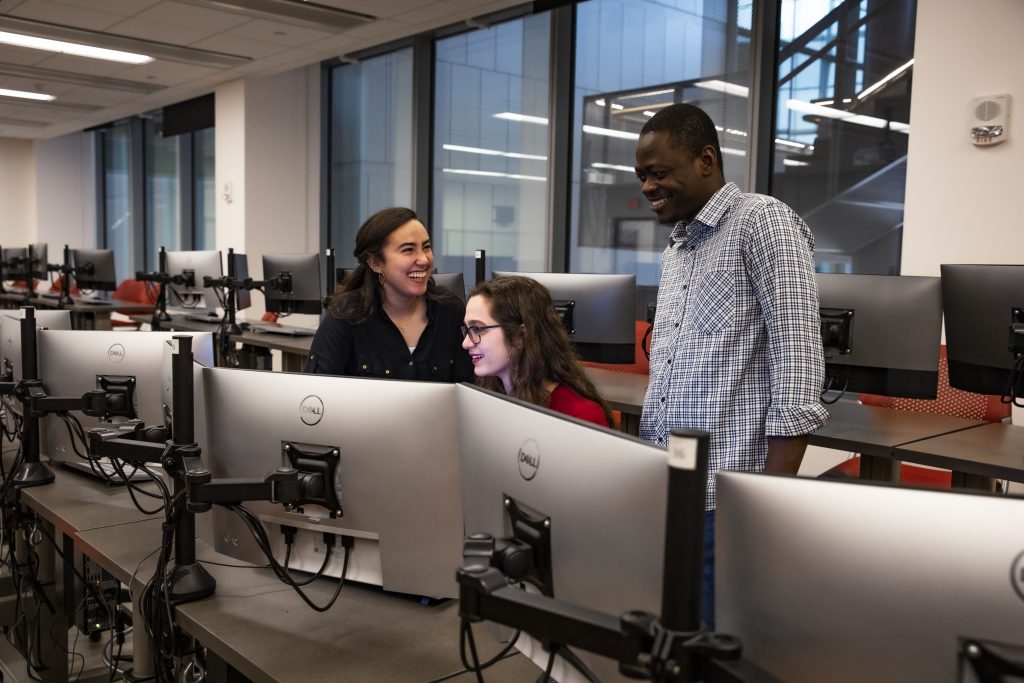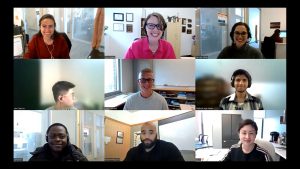
With the state being a hub for crop yield and animal production, Iowa’s policies on the production and protection of our food, water and energy (FEW) resources play a big role in the environment as we know it.

In the Department of Agricultural and Biosystems Engineering, researchers received a $1.9 million grant from the National Science Foundation to provide a broad-scope framework presenting how FEW systems work together. Including elements like crop and animal production and ethanol generation among other things, the team is designing a series of maps that describe the food, energy and water data elements within the state of Iowa, and housing the maps in one user-friendly webpage.
Specifically, they are presenting the annual and spatial uses and surpluses of nitrogen in their framework, a chemical that is central to agriculture but also to water quality. Introducing nitrogen into the environment can have negative impacts on local water quality, and a negative impact on water quality for those consuming and using water downstream from Iowa. But each researcher in the project is bringing a different side of expertise to the table, an intentional decision due to the broad scope of data in the project.
The team, consisting of cross-departmental collaboration between Purdue University and Iowa State University, involves several departments at Iowa State, including aerospace engineering, agricultural and biosystems engineering, civil, construction and environmental engineering, and philosophy.
Six students, Robert Philpott, Júlia Brittes Tuthill, Yen-Chen Liu, Carloyn White, Samuel Soetan and Siddhesh Naidu, and six faculty, Amy Kaleita, Lu Liu, Eliot Winer, Clark Wolf and Leifur Leifsson are involved in this project.
Through this framework, a broad perspective will become more accessible to policymakers and other stakeholders that have several perspectives to put into play when making decisions.
“Policymakers have a very broad scope of what they are making decisions about, and have to be representing a broad set of constituents,” Kaleita said. “If they are interested in how we keep yields high while minimizing environmental output and supporting the ethanol industry, they need models that cover a lot of interrelationships and generate a lot of combination frameworks.”
In previous research, there aren’t a lot of modeling frameworks that cover subsystems of the food-energy-water nexus and components of the agricultural industry at once. This data can impact an assortment of decision-makers, farmers and their crop production management, policymakers, and other decision-makers in Iowa.
This framework developed by the team incorporates a variety of data that is brought together on a single tool. The dashboard, which is still a work in progress, has a set of tabs with sourced data, and another set of tabs in progress that will analyze the sourced data and turn it into trends – transforming the framework from a visualization tool to an analytical product.
Using the dashboard, users can select years, counties and the data set that they want to see, accommodating the framework to their curiosity.
“Iowa is upstream of a lot of places that receive outflow of our food products, our animal-based products, and our water quality as it heads downstream. So we are developing a framework that can help understand how some of those larger scale agricultural decisions can impact people,” Kaleita said.
Unlike many projects that follow this model of funding, this project involves a high amount of interaction with fellow researchers across many departments.
“Since there are a lot of different departments here, there are a lot of cross collaborations. An even more important and long-lasting outcome than our specific research is the training that our students are getting in interdisciplinary collaboration,” Kaleita said.
Working on such a high-influence project has been many years in the making for the team. With a consistent framework, the researchers are providing a chance for decision-makers to look at the impacts of big decisions through a variety of lenses, comparing and contrasting a variety of data.
“This project is really meant to develop a consistent framework where you can look at the impacts on a lot of different subsystems, on a scale that is similar to the scale where some of these overarching decisions are made,” said White, a masters student in ABE adding policy parameters to the framework. “The overall impact of this project should be reducing nitrogen that is in the environment, which has direct impacts on the water quality that people are drinking in the state of Iowa. But we are also thinking about the downstream impacts, on people who live along the Mississippi or on the gulf, studying the indirect impacts on people, too.”
Providing safe water, food and energy is a priority in ABE. While the department doesn’t specifically make large-scale decisions, the team can work to provide clarity on the impact of agriculture in the food and water we consume and the energy that we use.
